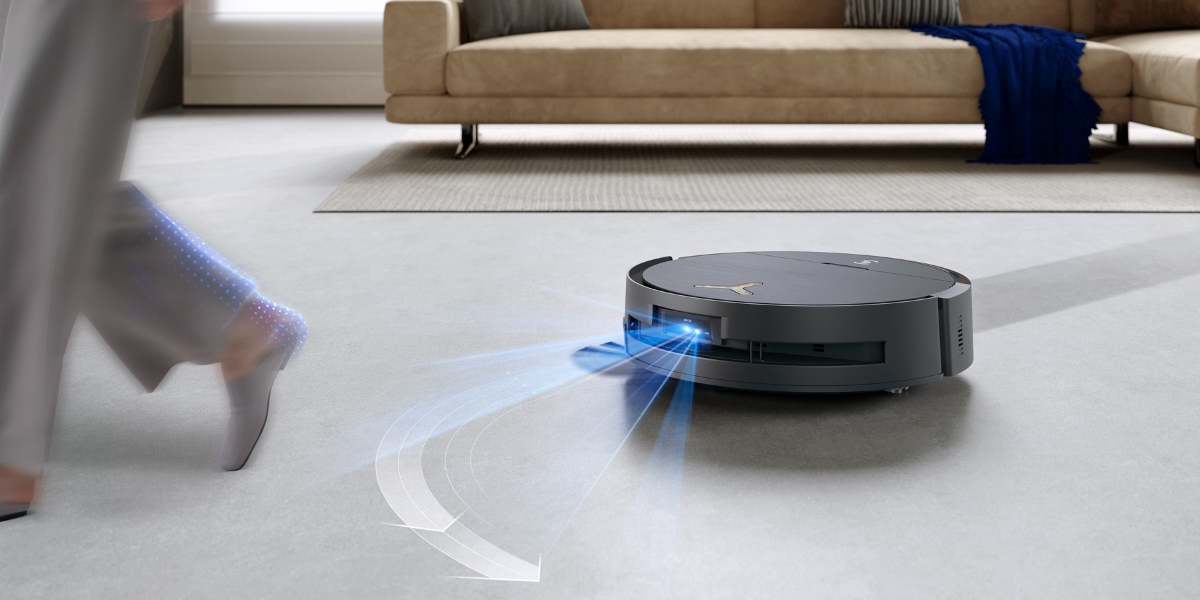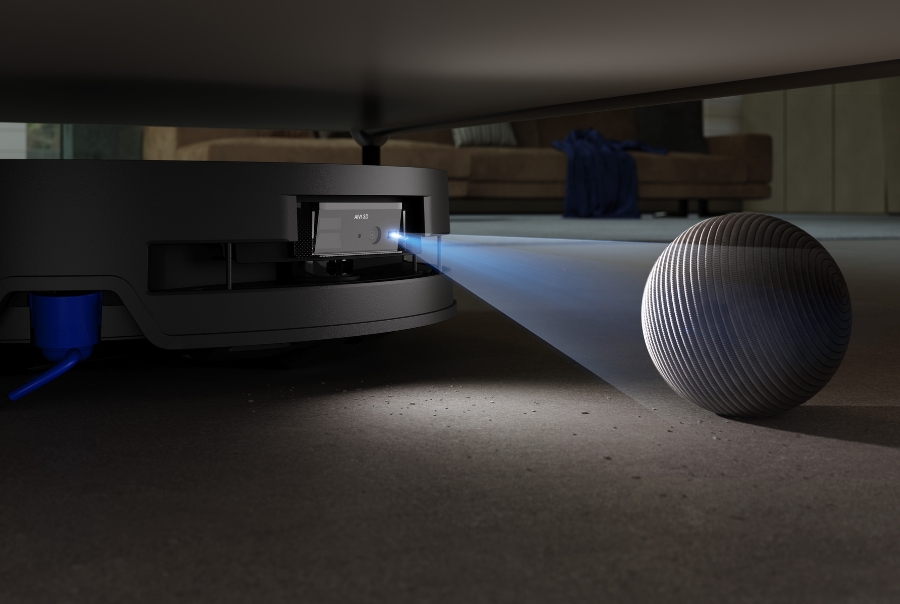What Are The Different Types of Navigation in Robot Vacuums?
2025-06-05

There are over 145 million housing units in the US, and naturally, they don’t all look the same. From compact NYC apartments with tight corners to sprawling multi-story homes, each space comes with its own cleaning challenges. When shopping for a robotic vacuum cleaner, it’s important to make sure the navigation technology is advanced enough for your home’s layout.
While older models were often criticized for their random movement, which led to missed spots and repeated areas, today, smart vacuums use advanced navigation technologies and sensors to map your home, detect obstacles, and plan efficient cleaning paths.
What Are The Different Types of Navigation in Robot Vacuums?
Thanks to technological advancements, modern robot vacuums use a wide variety of navigation systems to clean your home. Instead of relying on random movement, common types include LiDAR (Light Detection and Ranging), Simultaneous Localization and Mapping (SLAM), camera-based mapping like vSLAM, gyro and accelerometer-based systems, and sensor-based navigation. Most robot vacuums combine multiple technologies to deliver better results.
Here's a quick look at the most common types of navigation:
|
Navigation Type |
Technology |
Accuracy |
Obstacle Detection |
Best For |
Cost |
|
Random Navigation |
No mapping |
Low |
None |
Small open spaces |
Low |
|
Gyroscope & Accelerometer |
Motion tracking |
Moderate |
Limited |
Basic single-floor layouts |
Low |
|
Sensor-Based Navigation |
Bump, infrared |
Moderate |
Basic |
Mixed flooring |
Moderate |
|
Camera Mapping |
Optical sensors |
High |
Good |
Bright, well-lit rooms |
Moderate |
|
SLAM Navigation |
Sensors + algorithms |
High |
Excellent |
Multi-room or complex homes |
Moderate-High |
|
LiDAR Navigation |
Laser sensors |
Very High |
Excellent |
Multi-story or large spaces |
High |
|
Combined Technologies |
Mix of all above |
Very High |
Excellent |
All types of homes |
Varies |
Random Navigation
Random navigation is the most basic method. As the name suggests, the vacuum moves in no particular pattern, changing direction only when it bumps into something. Even though it may eventually cover the entire room, it’s inefficient and can leave missed spots or clean the same areas repeatedly. It’s best suited for open rooms with minimal obstacles.
Gyroscope and Accelerometer Navigation
Using motion sensors similar to those in smartphones, these vacuums track changes in direction and angle. While they don’t create visual maps, they follow semi-structured cleaning patterns. This tech is definitely an upgrade from random movement and works for simple, single-level homes with little clutter.
Sensor-Based Navigation
Sensor-based navigation largely depends on multiple physical sensors, such as bump, cliff and infrared sensors built in the device. Each sensor focuses on one task, either responding to obstacles or stair edges to prevent collisions or falls. Though they don’t build maps, they adapt better than random models. They’re great for mixed floorings but can struggle with coverage in complex spaces.
Camera Mapping
Some robot vacuums use cameras, with DEEBOT X9 PRO OMNI incorporating RGBD cameras and camera light technology, to help orient themselves within a room. These cameras take photos of surroundings and scan elements like light fixtures and sofas to understand the space and create a map. However, it depends heavily on consistent lighting to function properly.
SLAM Navigation
SLAM stands for Simultaneous Localization and Mapping, and it combines data from multiple sensors and software algorithms to create detailed, real-time maps. One major type is vSLAM, or visual SLAM. By capturing images of the environment and identifying key visual points like edges, corners, or furniture, these points are then utilized to build a 3D map in real time. Thus, vSLAM adapts well to changes like moved furniture, but performs best only in well-lit environments.
LiDAR Navigation
Smart vacuums with LiDAR (Light Detection and Ranging) use lasers to scan a room, measure distances, and create precise layouts. The concept is simple: the LiDAR sensor emits laser beams and measures the time it takes for them to bounce back after hitting objects. By calculating this “time of flight”, the system accurately determines the distance to each object. When comparing vSLAM and LiDAR, the latter works equally well in the dark, so you don’t need to keep lights on while cleaning.
Combined Technologies
To achieve the best navigation results, premium models like DEEBOT robotic vacuums combine multiple technologies: LiDAR, cameras, sensors, and AI-based features. By leveraging the strengths of each system, they continuously optimize cleaning patterns while avoiding obstacles in real time, even in low-light conditions. They are well-equipped to navigate complex layouts, including multi-floor homes.
Why Navigation Matters in Robot Vacuums?
Navigation matters in smart vacuums, especially for homes with clutter, pets, or large families. With advanced navigation systems, robot vacuums with mapping like DEEBOTs enjoy improved cleaning efficiency and coverage, leaving no missed spots or unnecessary overlaps; even if pet hair builds up under furniture, these vacuums can easily reach and clean tight spaces. This helps shorten cleaning time and reduces energy use.
At the same time, models with navigation tech recognize obstacles and avoid collisions with your delicate furniture and walls. In case you rearrange your space or add new items like a coffee table, top-tier navigation allows them to quickly adapt to the new layout.
How To Choose The Right Navigation For Your Robot Vacuum?

When choosing the right navigation system for an auto vacuum, factors like your home layout, flooring, and lifestyle all play a part. Let’s say you live in a small apartment in New York or Chicago with tight corners and lots of items, models with visual navigation or LiDAR can help the vacuum navigate more precisely. In comparison, larger suburban or upscale homes in Aspen or Malibu may benefit from a combination of LiDAR and sensor-based navigation, which supports multi-floor cleaning and prevents falls.
To clean safely around pets and toddlers, real-time obstacle detection becomes vital. For those who can’t supervise the vacuum, models with random navigation are not recommended, as they’re more likely to miss spots or get stuck.
The latest DEEBOT robot vacuums, including the X9, T50, and X8 series, feature AIVI 3D 3.0 Omni-Approach Technology and fully embedded dToF LiDAR. The dToF LiDAR supports precise mapping, while keeping the vacuum slim enough for low-clearance areas. AIVI 3D 3.0 uses AI with real-time sensors and cameras to detect obstacles instantly. It's further powered by the Vision-Language Model (VLM), which identifies object contours and cleans closely along edges, overcoming the challenges of limited object recognition. Together, these technologies optimize DEEBOT’s coverage and obstacle avoidance, enhanced cleaning performance even in complex or changing environments.
FAQ
How do robot vacuums navigate?
They use technologies like sensors, lasers, cameras, and mapping algorithms to detect obstacles, avoid drops, and clean rooms efficiently. Advanced models build maps for smarter cleaning routes.
Do robot vacuum navigate without Wi-Fi?
Yes, basic navigation works without Wi-Fi. However, features like remote control, virtual barriers, or voice assistant integration require an internet connection.
Can a robot vacuum navigate a multi-floor home?
Many advanced models can store multiple floor maps and resume cleaning after recharging, making them suitable for multi-story homes. Just move them manually between floors when needed.
Related Products









